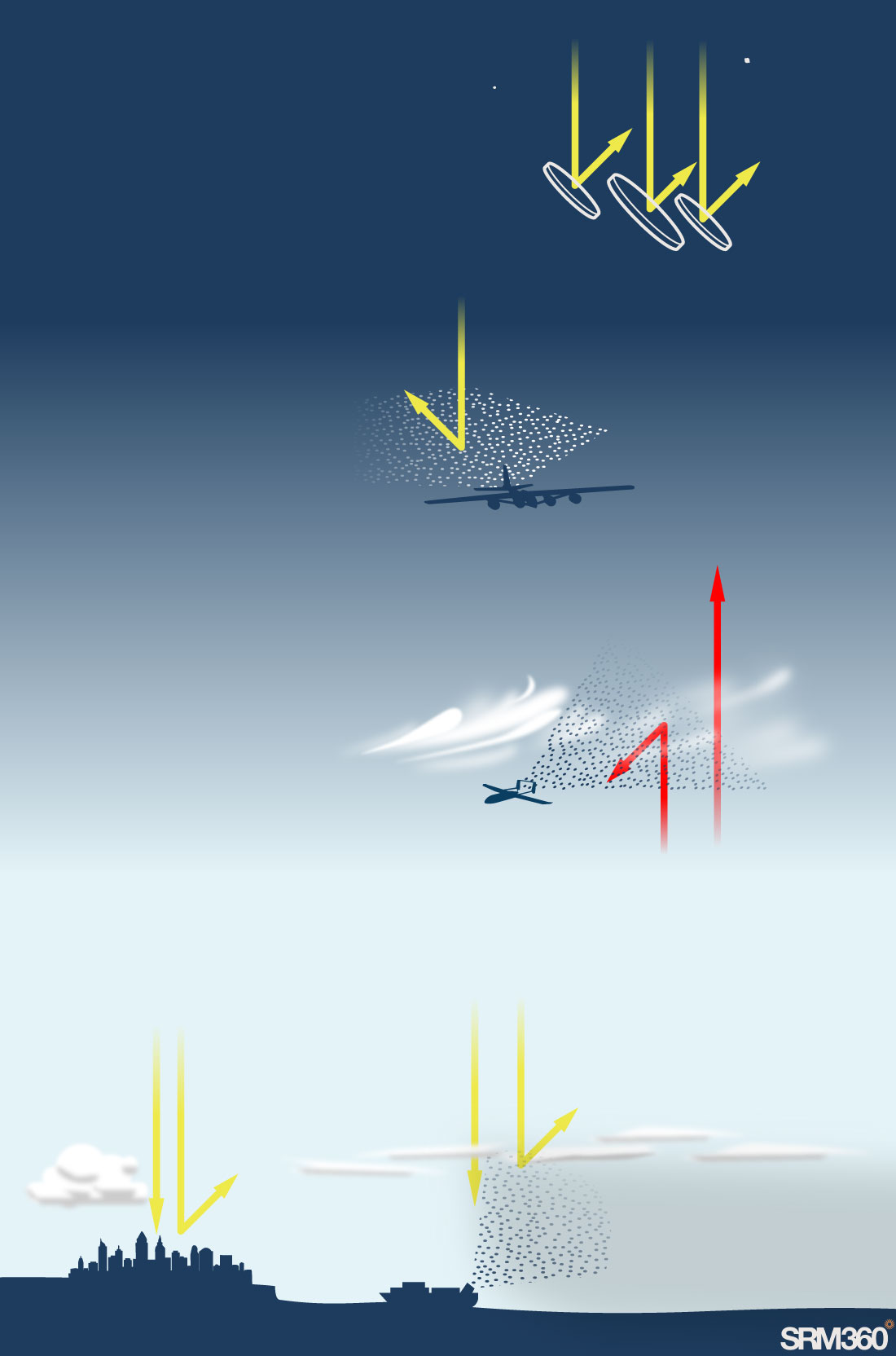Infographic
An overview of sunlight reflection methods
Sunlight reflection methods (SRM) are hypothetical approaches to lower global temperatures by increasing the amount of sunlight reflected to space.

Sunlight
Space-based SRM
Reflective material between the earth and sun could scatter light, but delivery would be extremely costly.
Stratospheric aerosol injection (SAI)
Tiny particles released in the stratosphere could reflect a small fraction of sunlight, producing a global cooling.
Cirrus cloud
thinning (CCT)
Seeding might thin cirrus clouds, allowing more heat to escape to space.
Heat
Surface albedo modification
Brighter surfaces could reflect more sunlight, but global cooling potential is limited.
Marine cloud brightening (MCB)
Sea-salt particles could be sprayed from ships to enhance the reflectivity of low-lying clouds.

Space-based SRM
Reflective material between the earth and sun could scatter light, but delivery would be extremely costly.
Sunlight
Stratospheric aerosol injection (SAI)
Tiny particles released in the stratosphere could reflect a small fraction of sunlight, producing a global cooling.
Heat
Cirrus cloud
thinning (CCT)
Seeding might thin cirrus clouds, allowing more heat to escape to space.
Surface albedo modification
Brighter surfaces could reflect more sunlight, but global cooling potential is limited.
Marine cloud brightening (MCB)
Sea-salt particles could be sprayed from ships to enhance the reflectivity of low-lying clouds.

Sunlight
Heat
Marine cloud brightening (MCB)
Sea-salt particles could be sprayed from ships to enhance the reflectivity of low-lying clouds.
Space-based SRM
Reflective material between the earth and sun could scatter light, but delivery would be extremely costly.
Surface albedo modification
Brighter surfaces could reflect more sunlight, but global cooling potential is limited.
Cirrus cloud
thinning (CCT)
Seeding might thin cirrus clouds, allowing more heat to escape to space.
Stratospheric aerosol injection (SAI)
Tiny particles released in the stratosphere could reflect a small fraction of sunlight, producing a global cooling.

Sunlight
Heat
Marine cloud brightening (MCB)
Sea-salt particles could be sprayed from ships to enhance the reflectivity of low-lying clouds.
Space-based SRM
Reflective material between the earth and sun could scatter light, but delivery would be extremely costly.
Surface albedo modification
Brighter surfaces could reflect more sunlight, but global cooling potential is limited.
Cirrus cloud
thinning (CCT)
Seeding might thin cirrus clouds, allowing more heat to escape to space.
Stratospheric aerosol injection (SAI)
Tiny particles released in the stratosphere could reflect a small fraction of sunlight, producing a global cooling.
Citation
Reuse this work freely
All visualisations, data, and code produced by SRM360 are open access under the Creative Commons BY license. You are free to use, distribute, and reproduce these in any medium, provided that SRM360 and the authors are credited.
Data produced by third parties and made available by SRM360 is subject to the licence terms of the original third-party authors. We will always indicate the original source of such data in our documentation, so please review the licence of any third-party data before use and redistribution.


